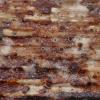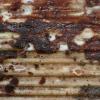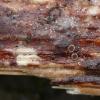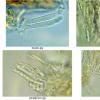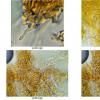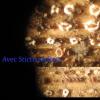
11-01-2016 21:53
 Bernard CLESSE
Bernard CLESSE
Bonsoir à tous,Après avoir découvert Dasyscyph

12-01-2016 23:06
Thorben HülsewigHi thereFor two days i found on the moss Lunularia

09-01-2016 20:56
 Bernard CLESSE
Bernard CLESSE
Ici, je ne sais pas si je fais bien de le mettre s

12-01-2016 12:34
 Blasco Rafael
Blasco Rafael
Hola, con la Piña tambien recogi unas aciculas de

11-01-2016 16:49
 Blasco Rafael
Blasco Rafael
Hola, tengo esta muestra sobre cono de Cupresus, c

10-01-2016 22:31
 Bernard CLESSE
Bernard CLESSE
Bonsoir à tous,Suite et bientôt fin de mes réco
À nouveau Dasyscyphus castaneus sur Fallopia japonica
Bernard CLESSE,
11-01-2016 21:53
 Bonsoir à tous,
Bonsoir à tous,Après avoir découvert Dasyscyphus castaneus sur renouée du Japon à Oignies, j'ai inspecté une autre grosse station de renouées du Japon près de chez moi.
Revoici à mon avis cette espèce,toujours en compagnie de Stictis stellata.
Bernard
Hans-Otto Baral,
11-01-2016 22:32

Re : À nouveau Dasyscyphus castaneus sur Fallopia japonica
Incredible!
Michel RIMBAUD,
13-01-2016 15:21
Re : À nouveau Dasyscyphus castaneus sur Fallopia japonica
Bonjour Bernard,
Suite à ton sujet je suis allé voir une station de renouée du Japon près de chez moi, et je crois bien avoir trouvé la même chose que toi : Stictis stellata + Dasyscyphus castanea.
C'est en Saône et Loire, sur la commune de Le Creusot.
Je dis D.castanea par similitude avec ton sujet car la micro ne m'a pas permis de le déterminer.
Quelle coïncidence !
Michel
Suite à ton sujet je suis allé voir une station de renouée du Japon près de chez moi, et je crois bien avoir trouvé la même chose que toi : Stictis stellata + Dasyscyphus castanea.
C'est en Saône et Loire, sur la commune de Le Creusot.
Je dis D.castanea par similitude avec ton sujet car la micro ne m'a pas permis de le déterminer.
Quelle coïncidence !
Michel
Bernard CLESSE,
13-01-2016 15:33

Re : À nouveau Dasyscyphus castaneus sur Fallopia japonica
Bonjour Michel,
A priori je pense que c'est tout à fait lui : même écologie, même "bouille"…
Même si je ne le connaissais pas avant, j'imagine que cet hiver très doux (jusque-là car chez nous ça change pour le moment) a favorisé ou permis de s'exprimer toute une série de petits champignons saprophytes habituellement peu courants car les conditions météo hivernales normales les "brident" en principe…
Du moins mon impression…… :o))
Amitiés,
Bernard
A priori je pense que c'est tout à fait lui : même écologie, même "bouille"…
Même si je ne le connaissais pas avant, j'imagine que cet hiver très doux (jusque-là car chez nous ça change pour le moment) a favorisé ou permis de s'exprimer toute une série de petits champignons saprophytes habituellement peu courants car les conditions météo hivernales normales les "brident" en principe…
Du moins mon impression…… :o))
Amitiés,
Bernard
